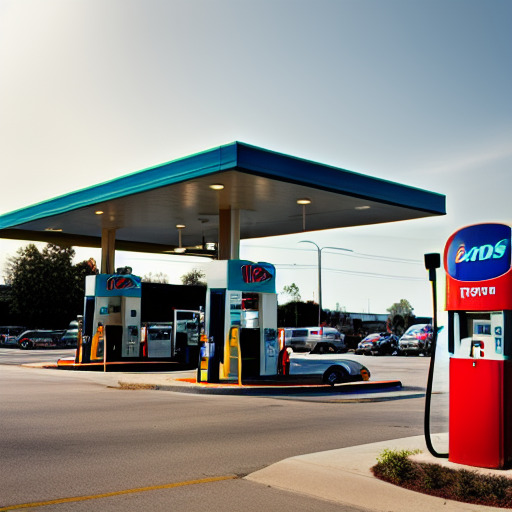Gas prices have been rising in the United States in recent months, and there are a number of factors contributing to this trend.
- Oil prices have been rising. The price of crude oil is the main driver of gas prices, and it has been on the rise in recent months due to a number of factors, including increased demand from China and other emerging economies, and supply disruptions in the Middle East.
- Refinery capacity is tight. The United States has been exporting more oil than it produces in recent years, which has led to a decline in refinery capacity. This has made it more difficult to meet demand for gasoline, and has contributed to rising prices.
- Summer driving season. The summer driving season is typically a time when gas prices rise, as more people are on the road. This year, the rise in gas prices has been particularly sharp, as demand has outpaced supply.
The rising gas prices are having a number of negative consequences for consumers and businesses. For consumers, it means that they are paying more for gas, which can eat into their budgets and make it more difficult to afford other expenses. For businesses, it means that they are paying more for transportation, which can increase their costs and make it more difficult to compete.
What is causing the spike in prices
- Extreme heat. The record-breaking heat wave that has been affecting the United States in recent weeks has also contributed to rising gas prices. Refineries are typically designed to operate between 32 and 95 degrees Fahrenheit (0 and 35 degrees Celsius). When temperatures exceed these limits, refineries can be forced to reduce production, which reduces supply and drives up prices.
- OPEC production cuts. The Organization of the Petroleum Exporting Countries (OPEC) has been cutting oil production in recent months in an effort to prop up prices. This has also contributed to the rising gas prices in the United States.
The rising gas prices are a complex issue with no easy solutions. However, it is important to understand the factors that are contributing to this trend so that we can develop effective strategies to address it.
The effect of high gas prices in the Television industry
Rising gas prices can make it too expensive for people to buy TVs. This can lead to a decrease in TV sales, as people are less likely to make impulse purchases.
Prices can also lead to an increase in the cost of manufacturing TVs. This is because the cost of transporting components to factories and finished TVs to stores will increase. This can lead to higher prices for TVs, which can also discourage people from buying them.
In addition, rising gas prices can also lead to changes in consumer behavior. For example, people may be more likely to stay home and watch TV if they are not able to afford to travel as much. This could lead to an increase in demand for streaming services and on-demand content.
Overall, the impact of rising gas prices on TV is complex and depends on a number of factors. However, it is clear that rising gas prices can have a negative impact on the TV industry, both directly and indirectly.
Here are some additional ways that rising gas prices can affect TV:
- Advertising revenue: TV networks and streaming services rely on advertising revenue to generate income. If people are spending less money on gas, they may also be spending less money on other discretionary items, such as advertising. This could lead to a decrease in advertising revenue for TV networks and streaming services.
- Content production: The cost of producing TV content can also be affected by rising gas prices. For example, if a TV show is filmed on location, the cost of transportation and accommodation for the cast and crew will increase. This could lead to higher production costs for TV shows, which could ultimately be passed on to consumers in the form of higher prices.
Gas Prices and Viewership
It is important to note that the impact of rising gas prices on TV is still evolving. It is possible that the industry will adapt to these changes and find ways to mitigate the negative effects. However, it is also possible that rising gas prices will have a lasting impact on the TV industry.
Yes, rising gas prices can have a significant effect on television production. Here are some of the ways that rising gas prices can impact television production:
- Increased transportation costs: The cost of transporting equipment and personnel to and from filming locations can increase significantly when gas prices are high. This can lead to higher production costs for television shows and films.
- Reduced travel: If gas prices are too high, some productions may choose to reduce or eliminate travel altogether. This could mean filming everything in one location or using virtual production techniques.
- Changes to shooting schedules: If gas prices are high, productions may need to adjust their shooting schedules to avoid traveling during peak times. This could lead to longer production timelines and higher costs.
- Changes in demand: If gas prices are high, people may be less likely to travel to watch television shows live. This could lead to lower ratings for live television shows and increased demand for streaming services.
- Changes in production budgets: If gas prices are high, production budgets may need to be adjusted to accommodate the increased costs. This could lead to cuts in other areas of production, such as cast salaries or special effects.
Overall, the impact of rising gas prices on television production is complex and depends on a number of factors. However, it is clear that rising gas prices can have a significant impact on the cost and feasibility of television production.
Here are some specific examples of how rising gas prices have affected television production:
- In 2008, when gas prices were at an all-time high, the production of many television shows was delayed or canceled.
- In 2022, some television networks have started to produce more content that can be streamed online, as this is a way to reach viewers who may not be able to afford to travel to watch TV in person.
- Some production companies have started to use virtual production techniques, which allow them to film in a studio and create realistic backgrounds using computer-generated imagery. This can help to reduce the cost of transportation and accommodation for cast and crew.
It is likely that the impact of rising gas prices on television production will continue to evolve in the years to come.
To learn more about gas prices click here.
Find out more AI news click here.



